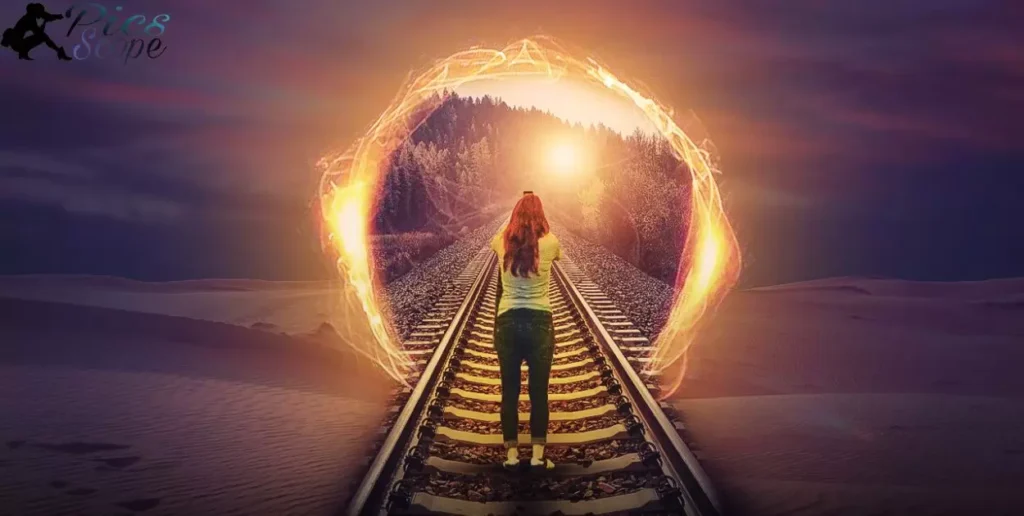Tone refers to the brightness levels in a photo and how they are distributed across shadows, midtones and highlights. It establishes the mood of an image. Photographers control tone by adjusting exposure, lighting and post-processing. Tone impacts contrast, color saturation and viewer perception.
What Is Tone In Photography? Tone helps set the emotional impression of a photo. It guides the viewer’s reaction. Mastery of tonal range gives photographers creative flexibility in the stories they tell with still images. Subtly brightening shadows or darkening highlights alters mood and meaning.
Skillful tone management creates compelling photographs. Photographers shape responses by lightening or darkening different tonal regions. Lower overall brightness conveys mystery or sameness. Boosting contrast adds drama. Broader tonal range imparts naturalism and depth. Learning tone gives artistic command over perception.
What role does tone play in photography?
Tone refers to the brightness levels in an image and how shadows, midtones and highlights are distributed. It establishes the overall lightness or darkness of a photo. Tone sets the mood of a photograph and guides the emotional response of the viewer. Mastery over tonal range gives photographers creative flexibility in the stories they tell.
Skillful tone management creates compelling images. Photographers shape reactions by lightening or darkening different tonal regions. For example, lowered brightness conveys mystery while boosted contrast adds drama. Tone is a fundamental photographic element that controls perceptual impact.
How does tone impact mood in photos?
The tone of a photograph significantly influences its mood and ability to evoke emotion. Dark, low-key tones convey seriousness, somberness or mystery. High-key images with bright, airy tones feel cheerful and lighthearted. Photos with bold contrasts and tension between highlights and shadows take on an intense, dramatic mood.
Shifting tones can dramatically change meaning and feeling. A dark, underexposed landscape may communicate foreboding while a brighter, properly-exposed version of the same scene could indicate peacefulness. Tonal extremes have intrinsic emotional power in visual communication.
What photographic techniques control tone?
Photographers can control tone using exposure, lighting and post-processing techniques. Adjusting shutter speed, aperture and ISO in camera sets the overall brightness. Adding or modifying light shapes tonal range by brightening shadows or darkening highlights.
Post-production tools like Levels and Curves give precise control over the placement of tones.
Deliberate choices around lighting and processing lead to the desired tonal outcome based on the intended mood. Photographers must master technical tone control to fully leverage its emotional impact.
When is managing tone most critical in photography?
Control over tone is especially important for dramatic portraiture, product photos meant to evoke a feeling, and landscape images where mood is key. It is also critical when conveying emotion is central to the photographic purpose, as in documentary or photojournalistic work.
Visible Light Used In Photography enables photographers to shape tone through lighting angles, intensity and color temperature. Tone must be carefully handled in technical applications like food photography, where highlights and shadows can make or break an appetizing look. Any genre of photography that seeks to influence audience perception relies heavily on skilled tone management.
How do photographers manipulate tone?

Photographers have various methods to shape and control the tonal range of their images for creative impact. Camera settings like exposure, contrast and white balance give initial tonal control when capturing a photo. The quality, direction and color of scene lighting also greatly alters tone.
Post-processing offers additional tonal adjustments with tools that brighten shadows or darken highlights in selected areas. Deliberate tone choices enhance mood, guide viewer focus and improve technical quality.
Skillful photographers consider all stages of image-making – capture, lighting and editing – as opportunities to influence tone for the desired emotional response. Adjusting any of the key tone controls leads to substantially different photographic results. Subtle to dramatic tonal shifts elicit contrasting reactions, enabling photographers to dictate impressions.
What camera settings adjust tonal range in photos?
Several key camera settings provide photographers the ability to shape tonal characteristics right when capturing an image. Exposure directly impacts brightness across shadows, midtones and highlights. Contrast expands or contracts the spread between the brightest and darkest areas. White balance shifts color casts that indirectly influence tone.
Understanding how to calibrate these central exposure and tonal controls grants photographers creative say over the end tone. Metering modes can automatically balance settings, but manual control grants the precision to match specific tonal goals. Refining camera technique expands tonal mastery.
How do lighting conditions affect tone in images?
The intensity, direction, color, hardness or diffusion of scene lighting significantly influences tone in resulting photos. Direct overhead sunlight creates dark shadows and high contrast for bold, dramatic tone. The warm glow of golden hour offers gently graduated tones. Blue hour light intensifies cool tones and deep shadows.
Photographers consider existing and supplemental lighting conditions in choosing subjects, angles and settings to harness natural tone or sculpt the desired mood. As tone establishes the impression left with viewers, lighting mastery lets photographers guide reactions through expert tonal enhancement.
What post-processing tools modify tone?
Post-production software provides photographers extensive control over digitally enhancing and modifying tone in their images. Programs like Lightroom and Photoshop offer targeted tools that brighten or darken regional tones. Dodging and burning shapes highlights, midtones and shadows.
Contrast adjustments expand or contract tonal variance. Hue/saturation alters color casts influencing tone. Black and white conversion removes color entirely for tonal emphasis.
The creative options post-processing provides for fine-tuning tone are nearly limitless.
Why is tonal range important in photography?
Tonal range, describing the spectrum of tones from shadows to highlights, is crucial for photographic quality and impact. It establishes contrast, mood, and perceived depth within an image. Careful tonal range management creates more compelling, dramatic photos that resonate with viewers.
Wider tonal range adds realism, dimension, and viewer interest. It allows conveying intricate detail throughout shadows, midtones and highlights. Limited tonal scale reduces context, flattens perspective and dulls photos. Extending range heightens drama and focus.
Why does tonal range impact photo quality?
The distribution of tones determines contrast and perceived clarity. Photos with clipped shadows or blown highlights lose detail and appear flat. Balanced tonal range makes textures pop with definition. It establishes visual hierarchy, directing attention through contrasting tones. Quality images showcase nuanced gradiations tonally.
How does limited tonal range reduce impact?
With a narrow tonal spectrum, shadows blur to black while highlights bleach to white. Details disappear, reducing context. Photos lose depth and viewer interest with limited range between extremes. Compelling images showcase intricate textures tonally. Excessively high or low-key images look unnaturally flat and dull.
When can extending tonal range improve photographs?
Widening tonal breadth adds realism and enhances natural textures. It prevents clipping that ruins detail. Extending range makes high-contrast scenes pop tonally while preventing harsh blacks or whites. For maximum impact, photographers craft tonal palettes to best showcase their subjects, not just capture them accurately.
What is the meaning of high key and low key photography?
High key photography refers to images that contain mostly bright tones, with very few midtones and shadows. This gives a bright, airy feel. Meanwhile, low key photography is the opposite – images are predominantly composed of darker midtones and shadows, creating a somber or mysterious mood.
How do high key photos utilize tone?
High key images utilize tone by having very few midtones and shadows. Most tones fall on the right side of the histogram in the highlights. This eliminates harsh shadows and conveys an optimistic, pure feel. High key images often blown out backgrounds and whites, with the subject brightly lit.
In what way do low key images leverage tone?
Low key images leverage tone through strong contrasts and shadows. Typically just one light source is used, creating dramatic shadows. Most tones fall on the left side of the histogram. This gives low key images a dark, moody quality. The contrast between the shadows and occasional highlights creates intensity.
How does tone differ in high vs low key photography?
The main difference lies in where the tones fall on the histogram. High key images have most tones in the highlights on the right side, conveying an airy feel. Low key images have most tones in the shadows and midtones on the left side, creating a darker mood. High key aims to eliminate shadows, while low key leverages shadows for drama
How can tone influence viewer perception in photos?

Tone greatly impacts how viewers perceive photos. The tones, ranging from dark shadows to bright highlights, set the overall mood and atmosphere of an image. For example, a high key image with mostly bright, light tones feels more cheerful and positive. Meanwhile, an image dominated by dark shadows evokes mystery, drama, and intensity.
Beyond just light and dark, the transition between tones also matters. An image with abrupt transitions between light and dark areas feels more contrasty and striking compared to a photo with gradual tonal transitions, which feels more harmonious. Overall, tone sets visual interest in a photo and guides the viewer to interpret the image’s message and meaning.
The position and angle of light on different surfaces in a photo also affects tone and contrast. Light reflecting directly into the camera from a shiny surface appears brighter, while indirect light on textured surfaces appears darker. Photographers can control the light to selectively brighten or darken objects and shapes in a composition to create the desired tonal range for the mood they want to achieve.
When can tone change the mood of a photograph?
The tone of a photograph can dramatically change its mood and atmosphere. Images with predominantly mid to dark tones, including deep shadows and silhouettes, take on more somber, mysterious, or ominous feelings.
Meanwhile, photos highlighted by bright whites and light tones feel more upbeat and positive. High key images with ethereal, light airy tones evoke peacefulness and tranquility. Tone also shifts the mood over the passage of time in a series of photos. For example, a sunrise sequence grows warmer and brighter from cool early morning blues to vibrant dusk oranges.
Similarly, tone can indicate seasonal change from warm autumn hues to cool, pale winter shades. Even in a single photo, juxtaposing warm and cool tones can create visual tension reflecting more complex emotional states. Tone has an intrinsic emotional quality that photographers use to affect how viewers feel looking at an image.
How can warm and cool tones impact meaning?
Warm and cool tones carry their own symbolic meanings that can change the message and significance of a photograph. Warm tones like red, orange and yellow conjure feelings of comfort, energy, action, and intensity. Warm light naturally creates a sense of late afternoon and evokes nostalgia. Cool tones including blue, green and purple feel more soothing, calm, and reserved.
Using predominantly warm or cool tones when photographing certain subject matter adds meaning through these cultural associations. For example, warm light on a couple embracing gives the photo a stirring, romantic feeling. Cool tones in a forest landscape feel more quiet and mystical.
Balancing the two can create visually striking color contrast that reflects life’s complexity. Photographers leverage both temperature extremes when toning photos to underscore desired qualities in the subject and elicit more thoughtful interpretations from viewers.
Why is managing tone essential for photography?
Properly managing the range of tones from shadows to highlights within photos is essential for capturing a scene or subject accurately and effectively. Rich tonality creates separation between elements so the subject stands out distinctly. It adds form, texture and visual interest.
Controlling contrast through tone gives dimension and depth to convey shape and structure. Dramatic tonal variation establishes focal points that draw viewer attention. Subtle tonal shifts lend atmosphere to immerse audiences in a setting’s mood.
Without commanding tones’ nuances in camera settings and post processing adjustments, digital images easily lose detail, becoming improperly exposed, washed out or muddied. Photographers must understand how to leverage light, exposure, histogram readings and editing techniques to open up or compress tonal space as needed.
Tones give photos visual appeal and emotional resonance. Mastering their balance through precision craft and artistry elevates ordinary snapshots into compelling photographic works. Managing tonality transforms blank canvases into brooding landscapes, piercing portraits and vivid visual stories.
FAQ’s
What Is Tone In Photography?
Tone refers to the range of brightness levels in a photo, from dark shadows to bright highlights.
How Does Tone Affect Mood In Photos?
Tone sets the mood of a photo – dark, somber tones convey drama while bright, airy tones feel cheerful.
Why Are Shadows And Highlights Important For Tone?
Balancing shadows and highlights creates tonal range which adds contrast and visual interest.
What Camera Settings Affect Tonal Range?
Camera settings like aperture, shutter speed and ISO affect how much light reaches the sensor, impacting tonal range.
How Can You Adjust Tone When Editing Photos?
Post-processing techniques like dodging and burning allow photographers to selectively lighten or darken areas of a photo to adjust tone.
Conclusion
Tone refers to the range of brightness levels in a photo, from shadows to highlights. It is a critical element in photography that impacts the mood and message conveyed. Tone sets visual contrast and emotional resonance.
Mastering tonal control starts with understanding how camera settings affect light metering. Photographers must balance shadows and highlights when capturing a scene. Post-processing techniques like dodging and burning provide further ability to selectively adjust tone. With practice, the nuances of light become intuitive.
Photographers then leverage tone intentionally to align with subject matter and evoke viewer response. Impactful photos result from technical expertise paired with artistic vision to shape the tonal palette. Whether subtly atmospheric or boldly contrasted, a photo’s tone speaks volumes.







